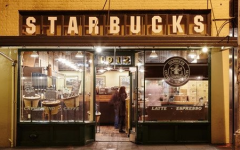Is hand-made coffee metaphysical or scientific? Is the hand coffee brewing technique really that important?
Many friends will feel that coffee is a metaphysics when they first come into contact with coffee. There are thousands of kinds of coffee beans. Some people can play tricks on a bean. All kinds of strange brewing methods create different flavor experiences. It really makes people call it mysterious!

Coffee Metaphysics
Coffee metaphysics has been popular since the age of Internet surfing! Also created a lot of interesting things, such as hand rush must go to the end, otherwise there will be bitter taste! Wet filter paper tastes better than wet filter paper; the dispute between one-knife flow and three-knife flow is quite Jianghu flavor. There is also the grinding degree of coarse sugar particle size that can never be grasped, and of course, there is also the flavor metaphysics of coffee...

Why do we prefer to call it coffee metaphysics?
There is a saying that goes,"Theology and science are not opposed to each other. Science is the explanation of what is known. Theology is the imagination of what is unknown." So, we decided that coffee is metaphysical, because we don't know coffee, we try to explain it with the forces of nature, and as we explore it step by step, to prove that the more we know about coffee, the more the metaphysical veil that hangs over coffee will peel off step by step, and this is coffee science.

Using scientific methods to open the door to metaphysics
About how hand-rinsed filter paper tastes better when the tail is removed, wet filter paper tastes better than wet filter paper, and so on. It's only true to say that under certain circumstances.
Let's talk about whether to go to the end of this bar, according to the "hand must go to the end, otherwise there will be bitter taste" this statement, then can be directly understood as normal brewing will appear bitter taste, obviously this conclusion is not established. If you use the right parameters (good coffee beans, powder to water ratio, grinding degree, water temperature, normal method), there will be no bitter taste or bad flavor, so if you want to use the method of removing the tail to avoid bad flavor, you can only say that there is a problem with the parameters. Although removing the tail is one way, is it better to solve the problem at the source than to avoid it at the end?
So what situation is needed to avoid the tail segment, such as the grinding precision of the bean grinder you use is not good, too much fine powder, or coffee beans are kept for too long, but you don't want to waste them. Removing the tail segment in these cases is also an optimal solution.
The battle between the one-blade flow and the three-blade flow was actually a microcosm of the discussion circle of the manual charging technique. There was an overly persistent pursuit of the manual charging technique, just like the existence of martial arts manuals. At that time, the pursuit of various techniques, a certain brewing techniques excessive deification. Drip coffee, for example, looks cool and mysterious to the layman, and the coffee is also very lingering, and it takes a lot of perseverance and practice to make it a legend.

From a scientific point of view, the drip method is actually to use a long time of slow water injection for a long time of steaming, so that the coffee powder is fully saturated with water, for the subsequent use of less water to extract more substances, the powder liquid ratio of the drip method is 1:10, this is a relatively strong coffee, and there will be no bitter taste. The longer the time, the more stable the flavor. When you understand the principles of the drip method, you will no longer think that the drip method is metaphysical.
Coffee flavor is probably the most metaphysical part of what my friends think. The barista brings you a cup of coffee and describes it to you as lemon, berry, red wine, sugar. Leaving you in the wind. Does a plain black coffee really have so much flavor?

Front Street can responsibly tell you that there are no lemons, berries, red wine, sugar, etc. in a regular cup of black coffee, but there are flavor substances that you can associate with these things. Everything has its own characteristics, and everyone sees the same thing differently.
Lemons, for example, are remembered for their acidity and remembered for their aroma. The lemon flavor of coffee does not necessarily coincide with lemon, but the acidity of this cup of coffee tastes very bright, reminiscent of lemon.

Another point is that people can easily associate parts with a whole in distinguishing the suitability of things, for example, someone will describe "this cup of coffee smells like roasted sweet potatoes, very sweet." There are 29 aroma compounds in roasted sweet potato, among which 2-acetylfuran with almond flavor and 2-acetylpyrrole with popcorn flavor contribute most to the aroma of roasted sweet potato.

You smell something like this.
The main source of aroma in coffee is also furan compounds, including 2-acetylfuran, so there will be roasted sweet potato aroma in coffee. Interestingly, sweet potato aroma is also described as "citronellol and geraniol rose aromas." Coffee smelled sweet, not really sweet with sugar. After all, the nose couldn't tell the taste. It is a kind of association mechanism. When smelling aromas like roasted sweet potato, honey and maple syrup, it will automatically fill up the taste of those substances, that is, sweet.
Therefore, coffee flavor is based on science, but in between more humanistic artistic conception.
Important Notice :
前街咖啡 FrontStreet Coffee has moved to new addredd:
FrontStreet Coffee Address: 315,Donghua East Road,GuangZhou
Tel:020 38364473
- Prev

Coffee history-the high-quality process of coffee tide, Starbucks coffee originated from the development process.
What has happened to the boutique of coffee? After the era of instant coffee, when the first wave of coffee gradually dissipated, several Europeans were slowly changing the American taste of boutique coffee, the godfather Alfred Peet and the godmother Erna Knutsen. Mr. Peet promotes his deep-roasted coffee beans, Alfred Peet, a Dutch coffee, on the west coast of the United States.
- Next

What are the coffee producing areas? Indonesian coffee brand introduction, Mantenin coffee bean characteristics.
At present, the coffee producing areas in the world are mainly distributed between 25 latitudes in the south and 25 latitudes in the north of the equator, and the producing area introduced today is Indonesia. Indonesia is the full name of the Republic of Indonesia (English: Republic of Indonesia), referred to as Indonesia (Indonesia). It is a Southeast Asian country with Jakarta as its capital. With Papua New Guinea, East Timor and Malaysia
Related
- Beginners will see the "Coffee pull flower" guide!
- What is the difference between ice blog purified milk and ordinary milk coffee?
- Why is the Philippines the largest producer of crops in Liberia?
- For coffee extraction, should the fine powder be retained?
- How does extracted espresso fill pressed powder? How much strength does it take to press the powder?
- How to make jasmine cold extract coffee? Is the jasmine + latte good?
- Will this little toy really make the coffee taste better? How does Lily Drip affect coffee extraction?
- Will the action of slapping the filter cup also affect coffee extraction?
- What's the difference between powder-to-water ratio and powder-to-liquid ratio?
- What is the Ethiopian local species? What does it have to do with Heirloom native species?

